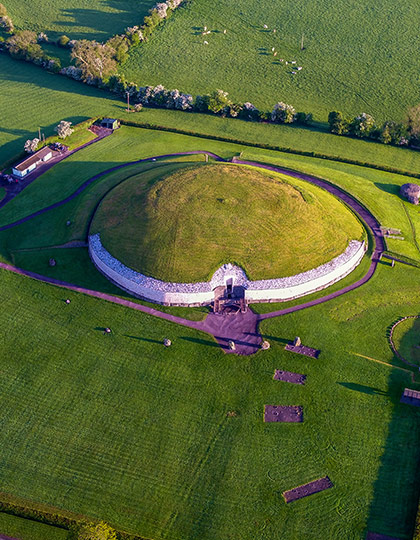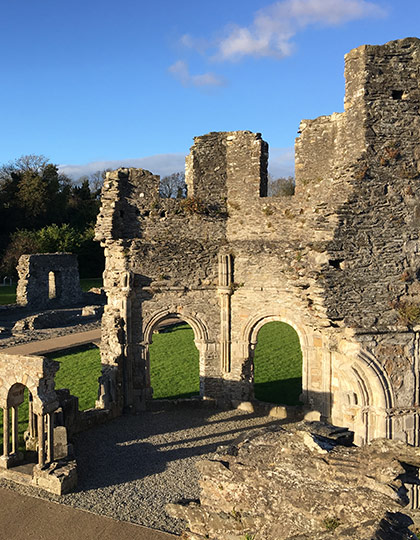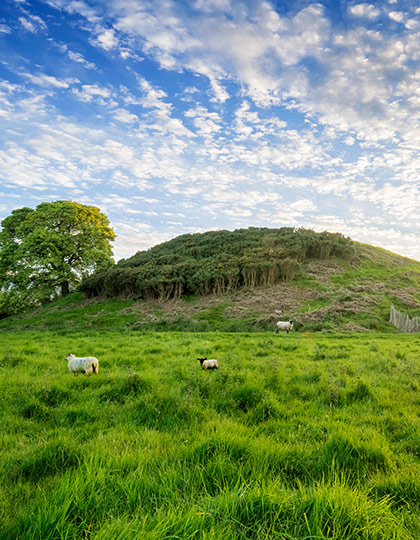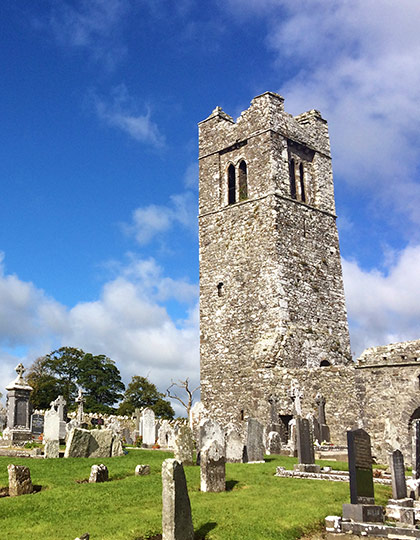This website uses cookies to help deliver its services. By using this website, you agree to the use of cookies as outlined in our Privacy Policy.
Sheep and Megalithic Sites
For decades, I’ve explored the ancient megalithic wonders within the Boyne Valley. I’ve frequently crossed paths with grazing sheep. Below, I share some photos capturing these encounters amidst the mystique of Boyne Valley’s megalithic sites.
Newgrange Passage Tomb
Newgrange is a prehistoric monument located in Boyne Valley, Ireland. It is one of the most famous megalithic structures in the world, dating back to around 3200 BCE. Newgrange is a large circular mound with a passage tomb inside, constructed from massive stones and earth. It is renowned for its remarkable astronomical alignment, during the winter solstice sunlight penetrates the passage and illuminates the chamber within.

Sheep at Newgrange | Photo by Boyne Valley Wools
Dowth Passage Tomb
Dowth Passage Tomb is one of the ancient megalithic structures located in the Boyne Valley, County Meath, Ireland. It is part of the Brú na Bóinne UNESCO World Heritage Site, along with the nearby Newgrange and Knowth monuments. Constructed around 3200 BCE during the Neolithic period, Dowth Passage Tomb consists of a large circular mound covering a central passage and chamber. The mound is approximately 85 meters (279 feet) in diameter and 15 meters (49 feet) high. The passage, which is aligned with the winter solstice sunrise, leads into a central chamber where cremated remains and grave goods were discovered.
The Hill of Tara
The Mound of the Hostages is an megalithic passage tomb located on the Hill of Tara in County Meath, Ireland. It dates back to the Neolithic period, around 2500 BCE, making it one of the oldest structures on the Hill of Tara. The mound consists of a circular mound of earth and stones, with a narrow passage leading into a central chamber. The name “Mound of the Hostages” originates from the historical tradition that hostages were once held there by the High Kings of Ireland.
Fourknocks Passage Tomb
Fourknocks is an ancient archaeological site located in County Meath, Ireland. It dates back to the Neolithic period, around 5000 years ago, making it roughly contemporary with other famous Irish passage tombs like Newgrange and Knowth. Fourknocks I consists of a central chamber accessed by a passage, which is typical of Neolithic passage tombs in Ireland.
The name “Fourknocks” is derived from the Irish words “Fuar Cnoic,” meaning “cold hills.” During excavations in the early 1950’s, an array of artifacts and human remains was unearthed within the tomb. Among the 65 burials discovered were both cremated and unburnt remains of adults and children. The site revealed an assortment of items, including intricately decorated pottery, vessels, and personal ornaments such as pendants and beads.
Loughcrew Cairns
The Stone Age cairns at Loughcrew, are a collection of prehistoric burial mounds located in County Meath, Ireland. Dating back to the Neolithic period, approximately 3000 BCE, these cairns are among the most significant megalithic sites in Ireland. Consisting of approximately 30 passage tombs, the Loughcrew Cairns are situated atop three prominent hills: Carnbane East, Carnbane West, and Patrickstown.

Sheep at Cairn T, Loughcrew
These Loughcrew cairns are adorned with ancient rock art, known as megalithic art which includs spirals, circles, and other geometric motifs. Like many megalithic sites in Ireland, the Loughcrew Cairns are aligned with significant astronomical events, such as the equinox alignment at Cairn T, suggesting a sophisticated understanding of celestial phenomena among the ancient inhabitants.

Newgrange & Boyne Valley

8hrs | €600 + Booking Fees


Boyne Valley Castles & Abbeys

8hrs | €600 + Booking Fees


Meath Megalithic Sites

8hrs | €600 + Booking Fees


Glendalough & Scenic Wicklow

8hrs | €600 + Booking Fees


Wicklow Gardens & Scenery

8hrs | €600 + Booking Fees


Cruise Excursions

8hrs | €600 + Booking Fees















